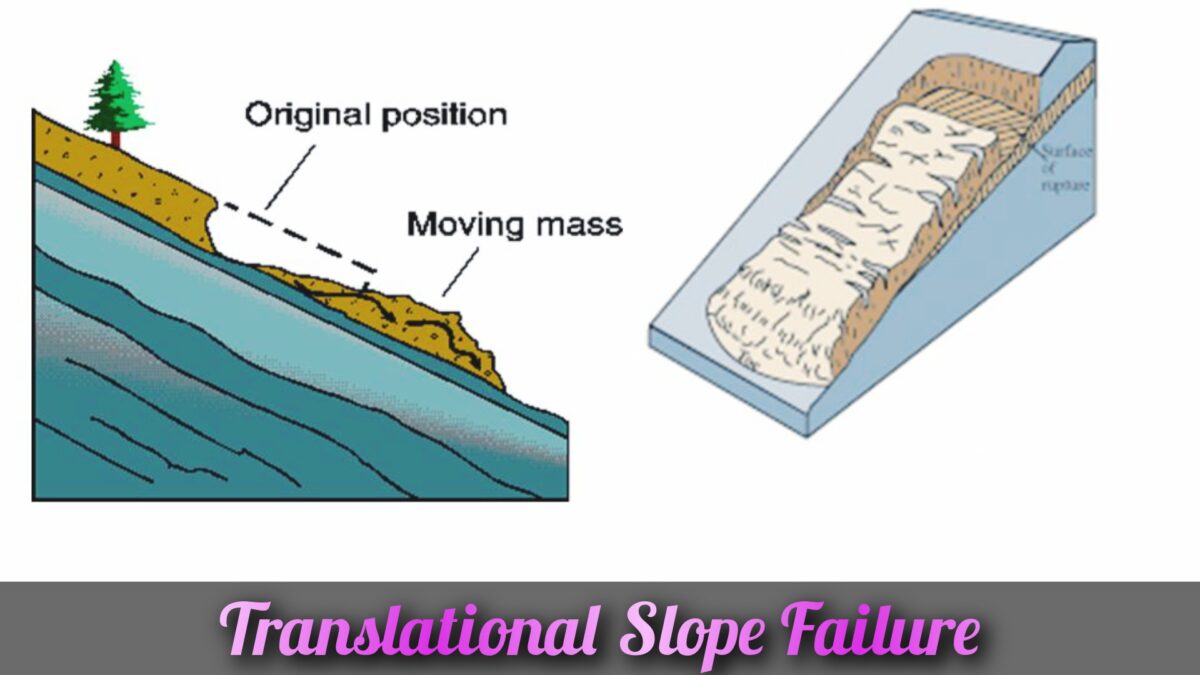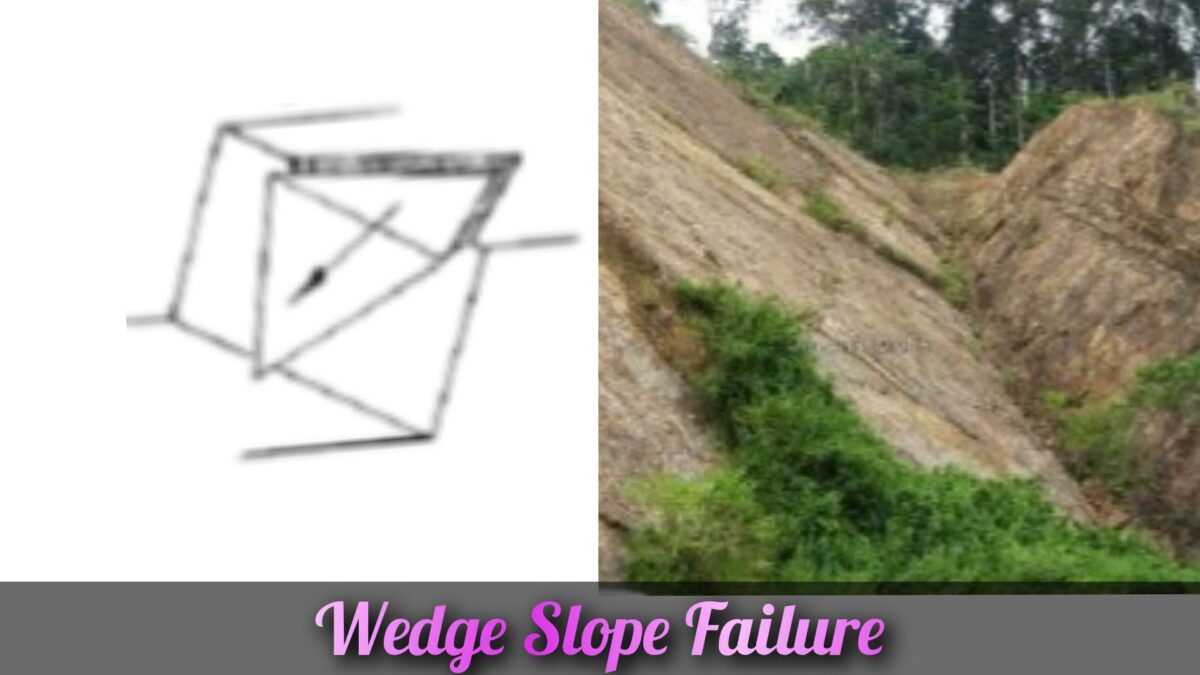Table of Contents
Introduction:
Slope failure occurs when the soil on a slope collapses and moves downhill. It is also known as landslides.

This can happen because of natural factors like heavy rainfall, earthquakes, or other disasters. When these forces become stronger than the soil’s ability to hold it in place, the slope fails and the soil slides down. This can cause damage to structures and pose a risk to people in the affected area.
Understanding the causes and taking measures to prevent slope failure is important to keep people and property safe.
Causes Of Slope Failure
1. Seismic Activities:
Seismic activities shake the ground forcefully and can make slopes become unstable and collapse. During an earthquake, slopes experience strong vertical and horizontal forces that stress the soil. These forces weaken the soil’s strength, making it more likely to fail.
2. Too Much Rain:
Rainfall can also lead to slope failure. When heavy rain falls for a long time, it softens the soil and can cause erosion. The rainwater seeps into the cracks in the soil, making it weaker and unable to hold the slope together. This can result in the slope collapsing.
3. Soil Erosion:
Erosion happens when wind or rainwater carries away soil particles. It changes the shape of the slope and makes it less stable, increasing the risk of slope failure. In some cases, erosion can cause landslides, where large amounts of soil suddenly move downhill.
4. Construction Activities:
Construction work near the bottom of a slope can weaken the soil and lead to slope failure. When construction is done, it removes the support that keeps the slope stable, making it more likely to collapse.
5. Geological Characteristics:
Some unknown geological features can also cause slope failures. These features, which may not be visible, affect the stability of the slope and make it prone to collapsing. It is important to study the geological characteristics of an area to prevent slope failures.
6. Increase or decrease in forces:
When the forces acting on the soil are too strong for it to handle, the slope can fail. There are different reasons for this, like sudden increases in forces during an earthquake, making the slope steeper, external forces acting on the slope, or the weight of the soil increasing due to rainwater. Similarly, if the bond between soil particles weakens or loses strength, it can also result in slope failure.
Effects Of Slope Failure
- Slope failures can claim human lives and cause severe injuries to people caught in their path.
- Slope failures can damage or destroy buildings, infrastructure, and other structures located on or near slopes, resulting in significant economic losses.
- Entire communities may be forced to evacuate or relocate due to slope failures, disrupting their lives and causing social and economic upheaval.
- Slope failures can cause significant environmental degradation, including the destruction of vegetation, erosion of soil, and disruption of ecosystems.
- Slope failures can block roads, railways, and other transportation routes, hampering travel and logistics, leading to delays and inconvenience.
- Debris, sediments, and pollutants released during slope failures can contaminate water bodies, affecting drinking water sources and aquatic ecosystems.
- Slope failures can impede water flow, creating impoundments and increasing the risk of downstream flooding during heavy rainfall events.
- In some cases, slope failures can result in the failure of downstream dams, potentially causing catastrophic flooding and loss of life.
- Agricultural land can become unusable due to slope failures, burying it under debris or altering its topography, leading to reduced food production and economic impacts on farmers.
- Slope failures can indicate underlying geological instability that persists even after the initial event, posing ongoing risks to human settlements and infrastructure in the affected areas.
Types Of Slope Failure
1. Translational Failure
Translation failure occurs when the slope has an infinite slope surface with no definite boundaries, and the soil beneath the free surface maintains the same properties up to identical depths along the slope. This type of failure is commonly observed in slopes consisting of layered materials or natural slope formations.

When the soil along the slope has similar properties up to a certain depth and the soil below this layer is composed of a strong or hard stratum, the weak topsoil will form a parallel slip surface when it fails. The failure surface in translational failure is parallel to the slope surface. This type of failure is characterized by a sliding movement of the soil mass along a well-defined plane parallel to the slope.
2. Rotational Failure
Rotational failure, as the name suggests, occurs through rotation along a slip surface, resulting in a curved shape on the failure surface. The failed surface moves outwards and downwards. In the case of homogeneous soils, the shape of the failure surface is typically circular, while in non-homogeneous soils, it may exhibit a non-circular shape.

Rotational failure can occur in three different ways, depending on the specific conditions and characteristics of the slope. It can manifest as circular failure, where the failure surface forms a complete circle, or as compound failure, where both translational and rotational movements contribute to the failure.
3. Wedge Failure
Wedge failure, also known as block failure or plane failure, is characterized by the formation of an inclined failure plane. This type of failure occurs when there are fissures, joints, or weak soil layers within the slope or when the slope is composed of two different materials.

Wedge failure shares similarities with translational failure, but the key distinction is that translational failure occurs only in the case of infinite slopes, whereas wedge failure can occur in both infinite and finite slopes.
Wedge failure often occurs in slopes with distinct layers or variations in soil properties. The failure plane takes the form of an inclined wedge, typically sliding along planes of weakness or interfaces between different soil layers or materials.
4. Compound Failure
Compound failure refers to a combination of translational slide and rotational slide. In this case, the slip surface exhibits a curved shape at two ends, resembling a rotational slip surface, while the central portion of the slip surface remains flat, akin to translational failure. This type of failure occurs when the slope consists of multiple soil layers or materials with varying characteristics.

The slip surface in compound failure is influenced by both translational and rotational movements, leading to a complex failure mechanism. The presence of hard soil layers at considerable depths from the slope surface can contribute to the formation of the flat central portion on the slip surface.
Techniques To Prevent Slope Failure
1. Proper Drainage:
Managing effective drainage on the slope reduces waterlogging and seepage forces, preventing slope failure caused by excessive water absorption.
2. Vegetation Planting:
Planting vegetation helps improve slope stability as the roots of plants contribute to soil stability.
3. Grouting:
Pouring a thin and coarse layer of mortar into various joints helps consolidate the soil into a solid mass, increasing its stability.
4. Sheet Piles and Retaining Walls:
Installing sheet piles and retaining walls provides lateral support to the soil, making it stable and preventing movement.
5. Densification:
Increasing the density of the soil through methods like explosive compaction or using a terra probe enhances the bearing capacity and strength of cohesionless soil particles, improving slope stability.
6. Berm Construction:
Creating a berm, a horizontal surface below the slope’s toe, increases the resistance force against soil movement and effectively prevents base failure.
7. Consolidation Techniques:
Methods such as electroosmosis, cement injection, and other consolidation techniques can be employed to enhance slope stability.
